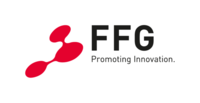Using drones to support the intermodal logistics chain in rail freight transport.
Background
The transportation sector, with freight transport being a major contributor, stands out as a significant source of CO2 emissions. A key strategy to lower these emissions and combat the adverse effects of climate change involves shifting freight transport to rail. Rail transport, due to its greater energy efficiency in comparison to road transport, constitutes a viable solution to curbing the environmental impact of greenhouse gases.
To make the most of rail transport, it must be efficient, reliable and cost-effective. This can be achieved through automated processes and steps towards more digitalization. The Digital Automatic Coupling (DAC), for instance, makes it easier and more efficient to assemble wagons. Nevertheless, there is a need for a device that can support in tracking shunted wagon groups and shunting routes. Stationary video surveillance systems are inadequate for this task, and equipping all wagons with cameras is far too costly. Consequently, a new solution is required.
Project Content
Pilot experiments have already been conducted to explore whether camera-equipped drones can assist in monitoring shunting routes at stations. The TopDrone project builds upon and scales up these experiments. For the first time, application possibilities, boundary conditions, potential uncertainty factors and critical points (e.g., overhead lines) for the successful use of drones in shunting traffic are investigated on a scientific basis.
Demonstrating that rail freight transport can be handled more efficiently with the aid of drones would strengthen its role as an eco-friendly mode of transport. It could clearly position rail transport as an alternative to road transport, particularly in conurbations and regions with weak industry.
Goals
The primary goal of the project is to test the use of drones in a railroad operational environment. We perform laboratory tests to determine whether and with which constellations it is possible to achieve process optimization. The endpoint of these efforts is a robust test scenario and a prototype solution concept.
The following research questions need to be answered:
- What requirements must drones meet in order to assist or even replace people who work in shunting?
- In what ways can the operations of drones be automated?
- What needs to be considered in terms of video management and the presentation of visual content from an ergonomic viewpoint?
- What kind of safety guidelines does it need when managing and displaying video content?
- What solutions for automated obstacle detection do exist (e.g. avoiding hitting obstacles)?
- What is the ecological balance when using drones, and is their use cost-effective?
- What is the potential for the widespread use of drones in shunting operations? Are they a workable solution for various settings, tracks, and scenarios?
Methods
Literature research (scientific literature, internal company documents), interviews with experts (e.g., occupational medicine, works council, shunting personnel, train drivers), and internal consortium workshops are conducted. These activities lay the foundation for formulating concepts and ideas on how drones can be employed in shunting operations, including the exploration of their potential to replace workers who stand at the head of the wagons and provide instructions to train drivers via radio.
The concepts are thoroughly evaluated using different methods (calculation of partial utility values, total utility value, utility value analysis, sensitivity analysis). Interfaces are defined and video management systems are adapted to the purposes of the project. Also, it is being tested whether artificial intelligence (AI) methods can be used to automatically detect obstacles (e.g. brake shoe) during shunting. Initial application variants for drones are undergoing testing in a secure environment, separate from actual rail operations. The results obtained form an important building block for a prototype concept.
Results
The project offers significant advantages to our industrial partners by enhancing their understanding of drone applications in rail transportation. This may be directly translated into concrete products and services. ÖBB stands to gain the most from the project as it addresses critical gaps in the automation of shunting processes. St. Pölten UAS benefits by acquiring new competencies and has the opportunity to exploit the project outcomes scientifically.
Project Partners
Funding
You want to know more? Feel free to ask!
Academic Director Rail Technology and Mobility (BA)
Academic Director Rail Vehicle Technology (BA)
Head of Research Institute
Carl Ritter von Ghega Institute for Integrated Mobility Research
Deputy Academic Director Rail Technology and Management of Railway Systems (MA)
Department of Rail Technology and Mobility
- FREQUENTIS AG
- Mission Embedded GmbH
- ÖBB Infrastruktur Aktiengesellschaft




